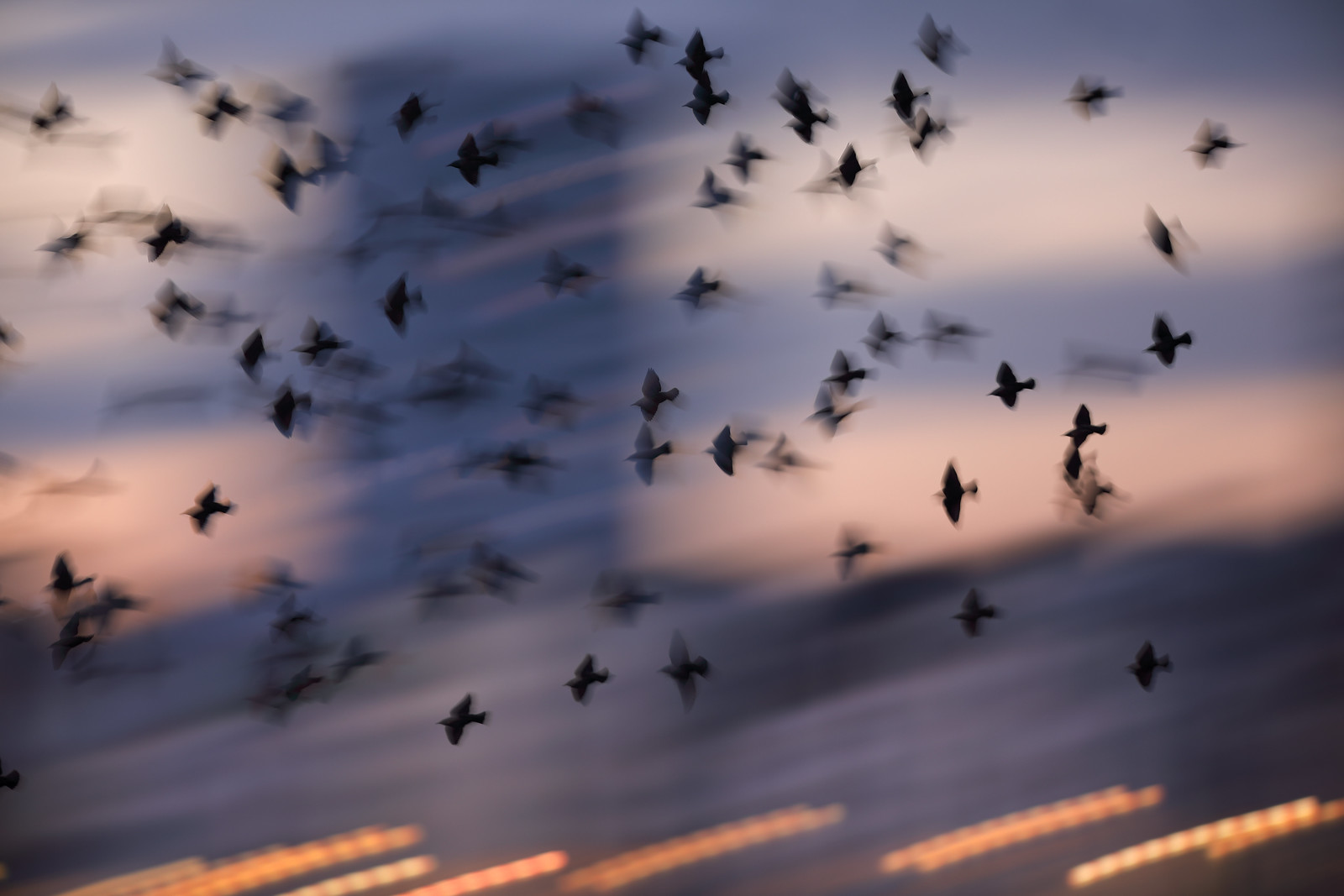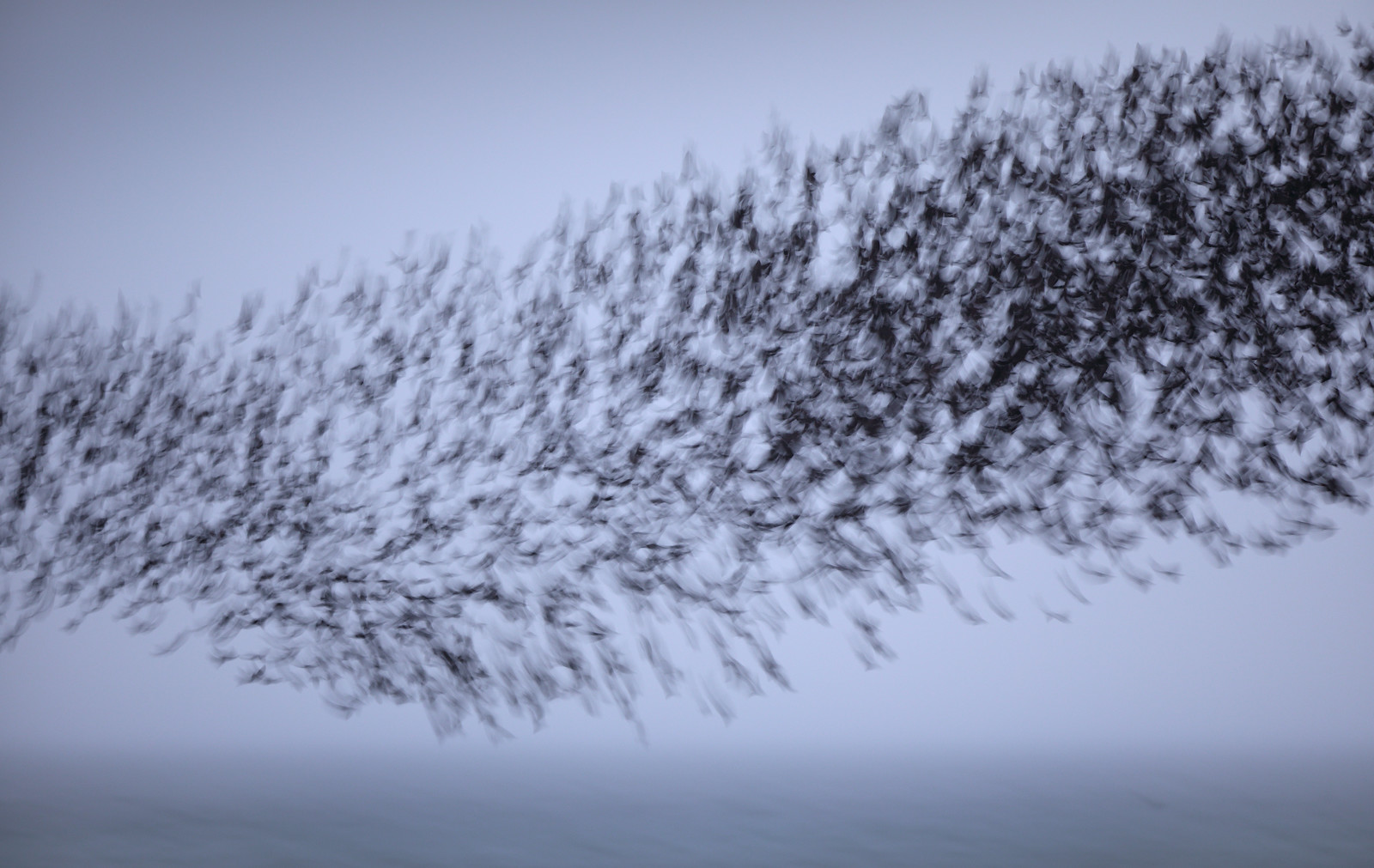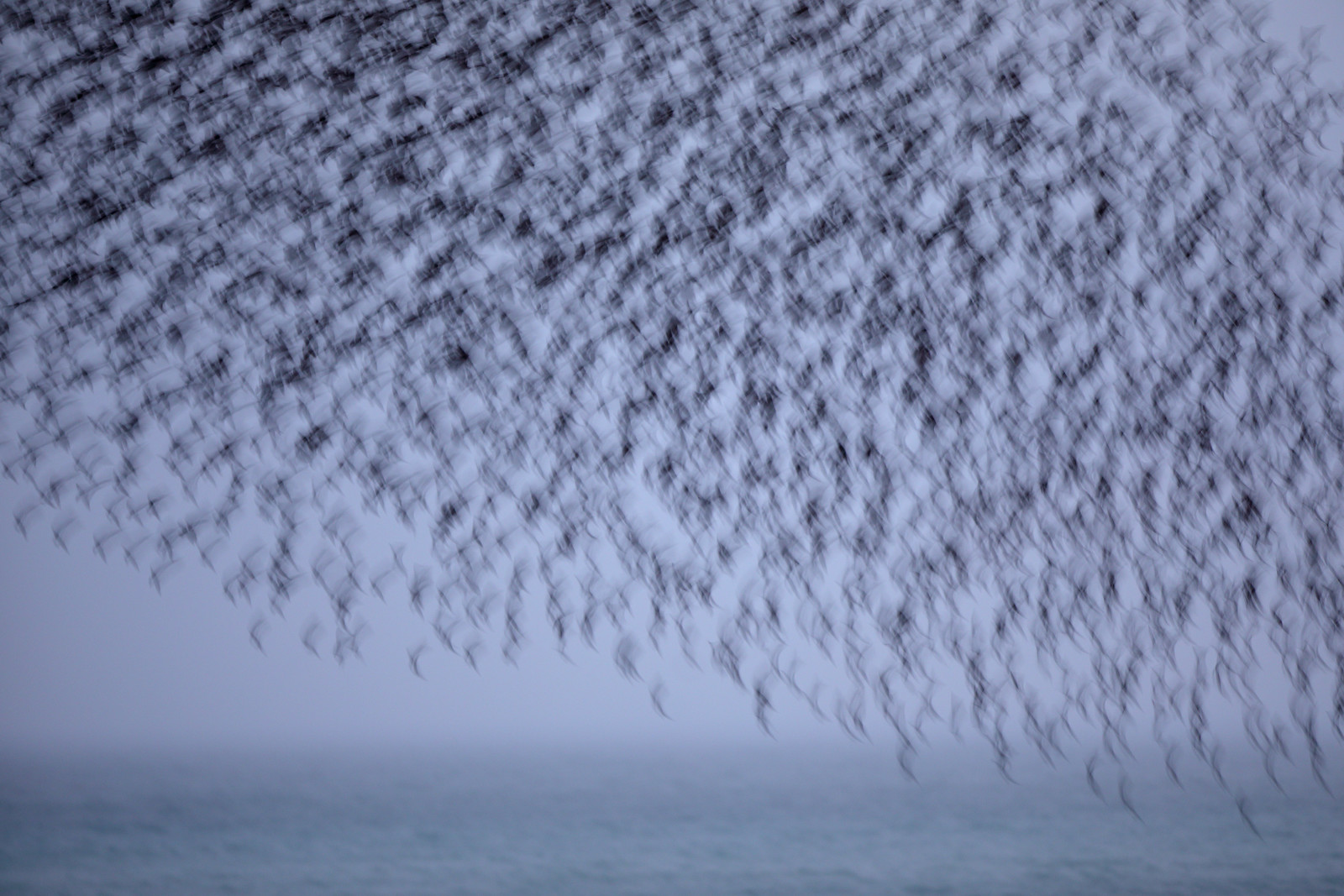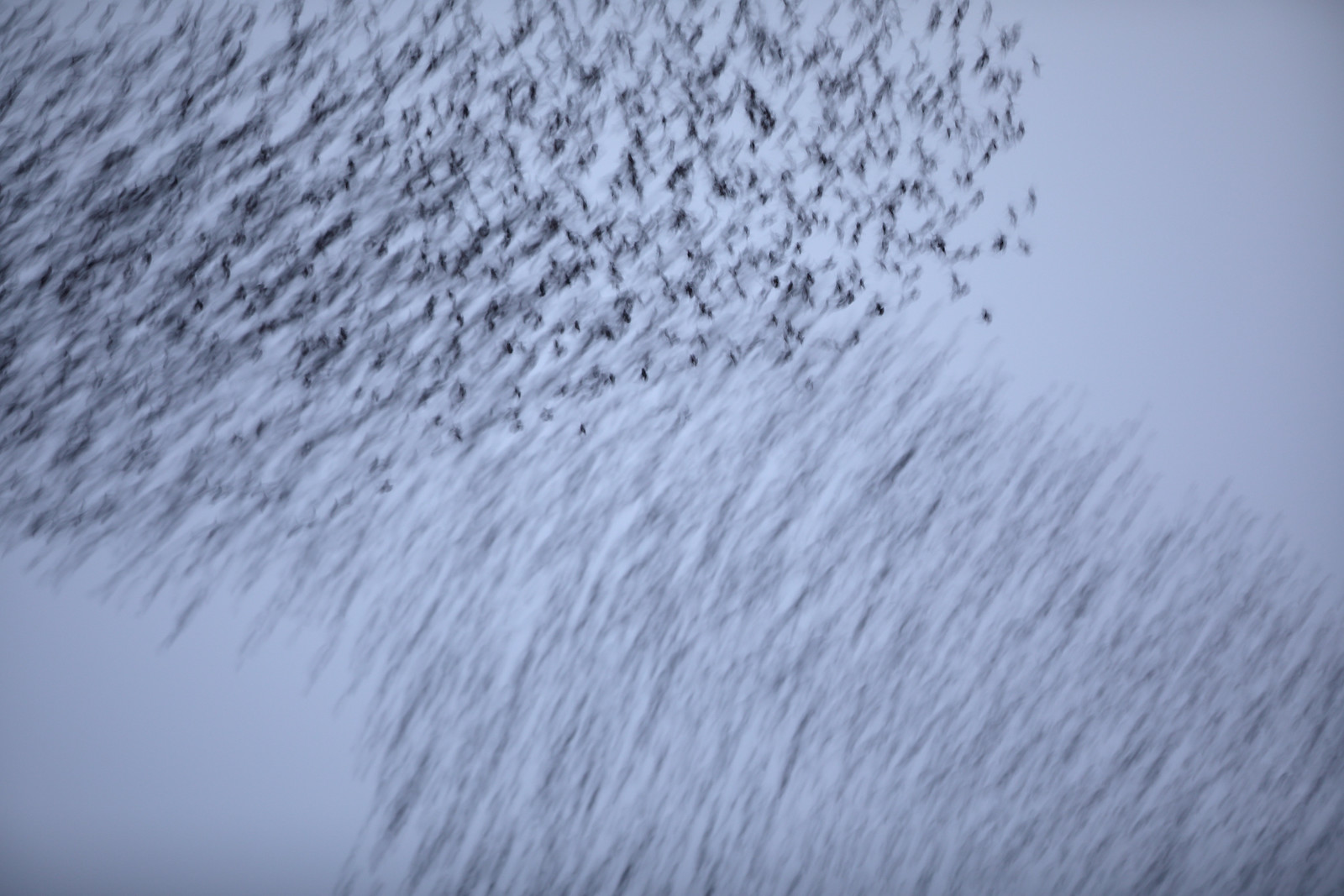Brighton Starling Murmurations - 2020 / 2021
Welcome to my starling murmuration essay for 2020/21. I had planned to photograph something else this winter, but I changed my mind on a whim, after going to Brighton Pier a few days after the second lockdown ended. By the forth visit, I had enough creative images to stop and publish the essay — and the twenty images here are from a total of six trips to the pier. Some of my images are highly unusual, and left me wondering how I even managed to take them. Take the first picture — a night city motion blur shot of birds and light trails from evening traffic. Shots three and four give us an idea of what a starling murmuration would look like, if photographed from within the atmosphere of Jupiter. The monochromatic motion blur images (ten to eighteen) look like they've been sketched on art paper using a pencil. I captured the strangeness of the murmuration, as it compacted into an oval before unravelling like a rope in pouring rain well after sunset, as most other photographers sheltered under a veranda. All images are single exposures — my camera is set to write data straight from the sensor and I bring the flat, unprocessed raw images to life in Adobe Photoshop.
Phone cameras and apps are so good at automating image workflows, that anyone can take photographs to an acceptable standard, post them to social media and receive hundreds of likes. The demarcation between beginner and expert has become less clear, now that technology has made photography more accessible. My journey as a wildlife photographer began in the absence of friendly validation and the imperative was therefore on me to judge and improve my standards. I have always found taking photographs easy, but so many variables must come together at just the right time, that creating consistently good art requires years of experience to execute. I hope this comes across in my latest photo essay.
The Brighton murmurations take a while to gather, particularly in fine weather, as the starlings maximise feeding time before heading over to the pier. I've seen quite a few people turn up early and ask "Is that all there is?" before wandering off disappointed, only to miss breathtaking huge oval-shaped murmurations fly 50 metres overhead 20 minutes later. The murmurations usually reach their peak about 15 minutes after sunset, so keep warm and sit tight. Rain just before sunset can prompt the starlings to gather early and if you're lucky, the sun might come out again when the murmuration reaches peak size.




















Comments
this photo essay of yours is an instant favourite!
I spotted your first picture on flickr but the last two of your series are my absolute favourites. And thank you also for sharing the technical details - I might give it a try too some day.
I send you my best wishes to Brighton, which we fell in love with during our last visit (2013, much too long ago!).
It's great to have people appreciate my work in the way you did. Most photographers post single images to social media, receive a flurry of likes and get swiftly forgotten. Viewers are just gobbling through images, like popcorn. I like to provide a narrative, with context. See my photo essays on Roe deer. Anyone with an interest in my subjects can come away with a greater understanding of their lives and how I photographed them.
Brighton has changed quite a lot, with new buildings, a brand new park and a tall viewing platform called the i360. If you ever return, there are some wonderful places in Sussex - the High Weald Rocks, Friston Forest and the Knepp Rewilding Project.
All the best.
Alan.